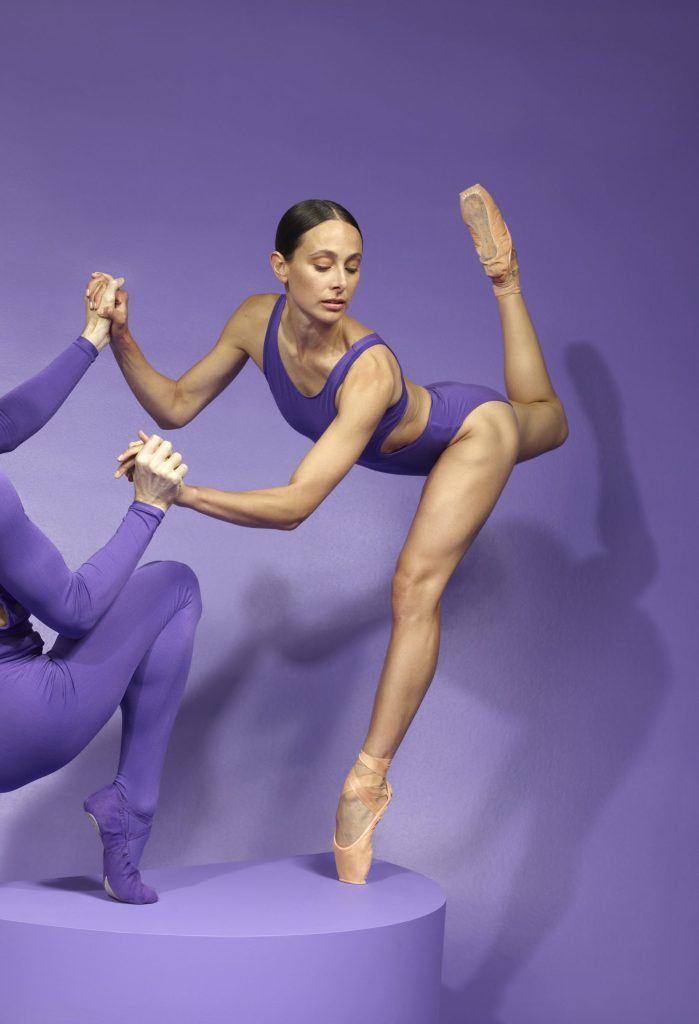The Hyperflexible Young Athlete
Dr. Susan Mayes1,2 & Dr. Behnam Liaghat3,4
1 The Australian Ballet, Southbank, Victoria, Australia.
2 School of Allied Health, La Trobe University, Bundoora, Victoria, Australia
3 Department of Sports Science and Clinical Biomechanics, University of Southern Denmark, Denmark
4 Centre for Evidence-Based Orthopaedics (CEBO), Zealand University Hospital, Denmark

Gymnasts, swimmers, dancers, and other performing artists require great flexibility to achieve their demanding movements with optimal technique. A high proportion of these athletes have joint hypermobility and bony morphology, such as acetabular dysplasia, that allows this extreme range of motion.1 Joint hypermobility has been linked to pain and injury.2 Further, joint hypermobility has been identified as a potential risk factor for knee injuries including traumatic damage to the anterior cruciate ligament, as well as being associated with shoulder injuries.3,4 This symposium will explore the risks of pain and injury in hyperflexible young athletes and provide evidence-based clinical measures that may mitigate risk and manage pain.
The Beighton score is the most common tool to screen for joint hypermobility and is often used to assess athletes prior to participation in elite training or pre-employment for dance companies.1 Generalised joint hypermobility (GJH) found in athletes is usually inherited or acquired rather than resulting from a heritable disorder of connective tissue.5 The prevalence of GJH in athletes ranges up to 95% depending on age, sex, and ethnicity.1,6,7
Although evidence of treatment for painful hypermobile joints is limited, data from novel research and clinical experience show promising results of including progressive strengthening programme.8
A recent 5-year longitudinal study by Dr Mayes has shown that professional ballet dancers with GJH were at no greater risk of developing hip pain than stiffer dancers, and hip joint cartilage defects were much more common in dancers without GJH.1 Rather than targeting a particular group, all dancers regardless of their flexibility are, therefore, provided with a hip strengthening program upon employment in The Australian Ballet with promising results. Further, acetabular dysplasia has been linked to hypermobility, and acetabular dysplasia is a known risk factor for osteoarthritis, but the outcome for elite dancers and gymnasts is unknown. Dr Mayes’ research has shown that young ballet dancers have larger hip muscles than athletes that may provide protection to a dysplastic hip.9,10 Performing artists also develop exceptional balance and proprioception of their joints that may protect against injury. Dancers love to stretch in extreme positions for prolonged durations of time. Hip joint subluxation and impingement occurs in dancers’ hips with normal bony morphology potentially leading to injury, and therefore, education on safe and effective methods of improving flexibility is vital for this population.11,12
Dr Liaghat’s research in the ´hypermobile shoulder´ has shown that mechanical shoulder symptoms such as self-reported instability, subluxation, or laxity are very common as an adjunct clinical entity to pain.13 Further, a clinical randomised controlled trial showed that progressive high-load strengthening exercise has the potential to be the future treatment of shoulder symptoms in the short term.8
During the symposium, examples from a progressive strengthening exercise program for the hip and shoulder muscles will be demonstrated to facilitate critical thinking in the treatment of the young flexible athlete.
Referencer
- Mayes S, Smith P, Stuart D, Cook J. Joint Hypermobility Does Not Increase the Risk of Developing Hip Pain, Cartilage Defects, or Retirement in Professional Ballet Dancers Over 5 years. Clin J Sport Med. 2021 Nov 1;31(6):e342-e346. doi: 10.1097/JSM.0000000000000862.
- Santore R, Gosey G.M, Muldoon M.P,Long, Healey R.M. Hypermobility Assessment in 1,004 Adult Patients Presenting with Hip Pain: Correlation with Diagnoses and Demographics. Bone and Joint Surg: November 4, 2020 – Volume 102 – Issue Suppl 2 – p 27-33. doi: 10.2106/JBJS.20.00060
- Sundemo D, Hamrin Senorski E, Karlsson L, Horvath A, Juul-Kristensen B, Karlsson J, Ayeni OR, Samuelsson K. Generalised joint hypermobility increases ACL injury risk and is associated with inferior outcome after ACL reconstruction: a systematic review. BMJ Open Sport Exerc Med. 2019 Nov 10;5(1):e000620. doi: 10.1136/bmjsem-2019-000620.
- Liaghat B, Pedersen JR, Young JJ, Thorlund JB, Juul-Kristensen B, Juhl CB. Joint hypermobility in athletes is associated with shoulder injuries: a systematic review and meta-analysis. BMC Musculoskelet Disord. 2021 Apr 26;22(1):389. doi: 10.1186/s12891-021-04249-x.
- Nicholson LL, Chan C, Tofts L, Pacey V. Hypermobility syndromes in children and adolescents: Assessment, diagnosis and multidisciplinary management. Aust J Gen Pract. 2022 Jun;51(6):409-414. doi: 10.31128/AJGP-03-21-5870.
- Nathan JA, Davies K, Swaine I. Hypermobility and sports injury. BMJ Open Sport Exerc Med. 2018 Oct 18;4(1):e000366. doi: 10.1136/bmjsem-2018-000366.
- Pacey V, Nicholson LL, Adams RD, Munn J, Munns CF. Generalized joint hypermobility and risk of lower limb joint injury during sport: a systematic review with meta-analysis. Am J Sports Med. 2010 Jul;38(7):1487-97. doi: 10.1177/0363546510364838.
- Liaghat B, Skou ST, Søndergaard J, Boyle E, Søgaard K, Juul-Kristensen B. Short-term effectiveness of high-load compared with low-load strengthening exercise on self-reported function in patients with hypermobile shoulders: a randomised controlled trial. Br J Sports Med. 2022 Jun 1:bjsports-2021-105223. doi: 10.1136/bjsports-2021-105223. Epub ahead of print.
- Mayes S, Ferris AR, Smith P, Cook J. Obturator externus was larger, while obturator internus size was similar in ballet dancers compared to nondancing athletes. Phys Ther Sport. 2018 Sep;33:1-6. doi: 10.1016/j.ptsp.2018.06.001. Epub 2018 Jun 2.
- Emery S, Cook J, Ferris AR, Smith P, Mayes S. Hip flexor muscle size in ballet dancers compared to athletes, and relationship to hip pain. Phys Ther Sport. 2019 Jul;38:146-151. doi: 10.1016/j.ptsp.2019.05.003. Epub 2019 May 20.
- Mitchell RJ, Gerrie BJ, McCulloch PC, Murphy AJ, Varner KE, Lintner DM, Harris JD. Radiographic Evidence of Hip Microinstability in Elite Ballet. Arthroscopy. 2016 Jun;32(6):1038-1044.e1. doi: 10.1016/j.arthro.2015.12.049. Epub 2016 Mar 2.
- Kolo FC, Charbonnier C, Pfirrmann CW, Duc SR, Lubbeke A, Duthon VB, Magnenat-Thalmann N, Hoffmeyer P, Menetrey J, Becker CD. Extreme hip motion in professional ballet dancers: dynamic and morphological evaluation based on magnetic resonance imaging. Skeletal Radiol. 2013 May;42(5):689-98. doi: 10.1007/s00256-012-1544-9. Epub 2012 Nov 29.
- Liaghat B, Skou ST, Sondergaard J, Boyle E, Søgaard K, Juul-Kristensen B. Clinical Characteristics of 100 Patients With Hypermobility Spectrum Disorders and Shoulder Complaints With or Without Mechanical Symptoms: A Cross-sectional Study. Arch Phys Med Rehabil. 2022 Jan 21:S0003-9993(22)00017-X. doi: 10.1016/j.apmr.2021.12.021. Epub ahead of print.






[…] The Hyperflexible Young Athlete […]